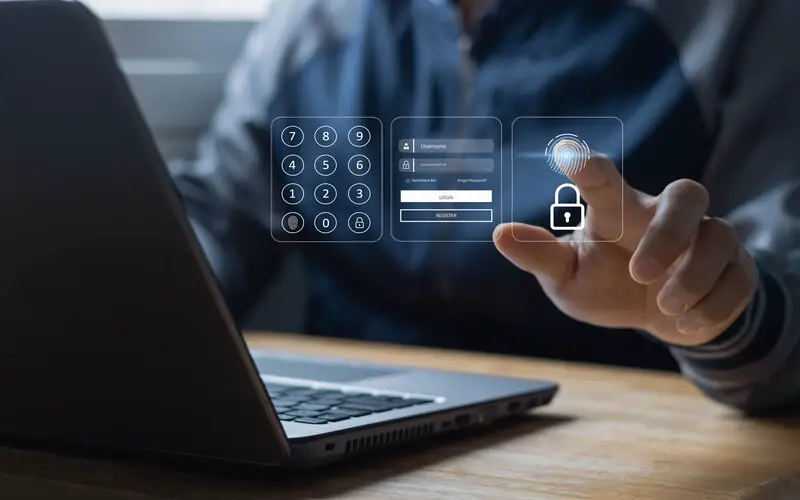This Valentine’s Day, cybercriminals from across the globe are looking to break your heart. Their goal is to hack into your organization, steal and encrypt your confidential data, and hold it hostage until you pay a hefty ransom.
In 2021, CNA Financial Corp, one of the largest insurance companies in the U.S., paid $40 million as ransom. It is likely to be the biggest ransom ever paid. That’s not all though. In 2022, 71% of companies worldwide were affected by ransomware and 62.9% of victims of ransomware attacks paid the ransom. These numbers show that ransomware is getting increasingly difficult to escape.
However, strong passwords, timely patching and configuration hardening are all safeguards that will keep your users, data and devices safe. In this blog, you’ll find useful tips and tricks for using a best-in-class RMM like VSA to avoid a ransomware-induced IT heartbreak.
1. Let’s patch things up
Although the cornerstone of any security exercise is patching, many companies fail to implement a robust patch strategy. Sadly, many companies still practice manual patching, a process as old as time and slow as molasses. Their tools and systems do not allow them to patch hundreds of endpoints simultaneously without inconveniencing the end users.
Kaseya VSA is a cutting-edge RMM solution that leverages automation capabilities to provide futuristic patching technologies to the modern IT professional. It supports fire-and-forget and risk-based patching for windows and macOS devices so you can sit back and secure all your endpoints on time. VSA also boasts a library of over 230 patchable third-party applications and vets them to limit day-one disruptions. You get more granular control over the process and decrease the chances of unintended consequences.
VSA also has the perfect feature to patch the endpoints of those users who delay patching for days on end. About 57% of ransomware attacks result from unpatched software due to end users blocking patches and compromising organizational security, often leading to devastating consequences. VSA’s integration with the Intel vPro platform allows it to turn on endpoints in the middle of the night, patch them and then turn them off again. No more worrying about careless end users.
2. Swipe right on configuration hardening
Configuration hardening reduces a company’s attack surface against threats and security risks. An attack surface is the sum of all the endpoints and vulnerabilities a cybercriminal can exploit to gain unauthorized access to your organization. Reducing the attack surface, implementing strict security practices and ensuring that all users adhere to them can strongly deter cybercriminals from carrying out their plans.
Security practices, such as configuration hardening, are holistic in nature. It includes keeping all ports closed, limiting user permissions and preventing anyone from executing scripts unless absolutely necessary. Properly configuring your firewalls and enforcing two-factor authentication are also a must. Keeping track of all your endpoints, enforcing 100% antivirus (AV) and antimalware (AM) compliance, and conducting deep, rich and continuous discovery will ensure that no endpoints go unprotected.
While doing all of the above might seem impossible with your current RMM, VSA allows you to do all this and more right out of the box. With VSA, you can automate user onboarding, deploy AV/AM remotely and even auto-remediate alerts for security risks, like unauthorized port usage, in a wink. Not only will you deliver high-quality work, but you can demonstrate your cybersecurity and IT resilience to clients, auditors and insurers by leveraging VSA’s advanced IT reporting and logging features. Shrink your attack surface, strengthen your defenses and get ahead of the curve.
3. Catch those red flags before it’s too late
If an alert crosses your desk that has you scratching your head, investigate it immediately. The most likely cause of any unusual activity on your systems and endpoints is an intruder trying to sneak around unnoticed. Keeping an eye out for the unknowns is the smart way to uncover a cyberattack before it can raise hell.
Organizations can identify new threats and take proactive measures to mitigate them by monitoring unusual behavior patterns, such as file encryption, backup deletion, boot file alteration and ransomware notes. Attackers also try to escalate privileges to gain access to more critical systems and data as they move laterally through a network.
Additionally, you should monitor for foreign RMM agents since some conventional RMM free trials are being used to spread ransomware. Our new native Ransomware Detection module on VSA ensures that our free trials are vetted in advance, avoiding incidents. This module detects ransomware-style behavior with almost no false positives and quarantines infected endpoints immediately.
The dwell time, which is the time between the moment of compromise and the organization discovering the attack, has doubled from 13 to 31 days in the last two years. In other words, detecting ransomware early and quarantining the infected endpoint can be a veritable silver bullet for your organization’s security.
It’s time to change the game with Kaseya VSA
This year, don’t let a ransomware attack leave you brokenhearted, beaten down and stuck rebuilding your entire IT ecosystem. Watertight cybersecurity can be yours right out of the box with a best-in-class RMM like VSA. Name your security task and VSA will fulfill it for you. Thanks to its automation capabilities, VSA will increase technician efficiency by 25% and reduce ticket volume by 30%. Want to see what VSA can monitor, manage, secure and automate for you? Book your free demo now!





